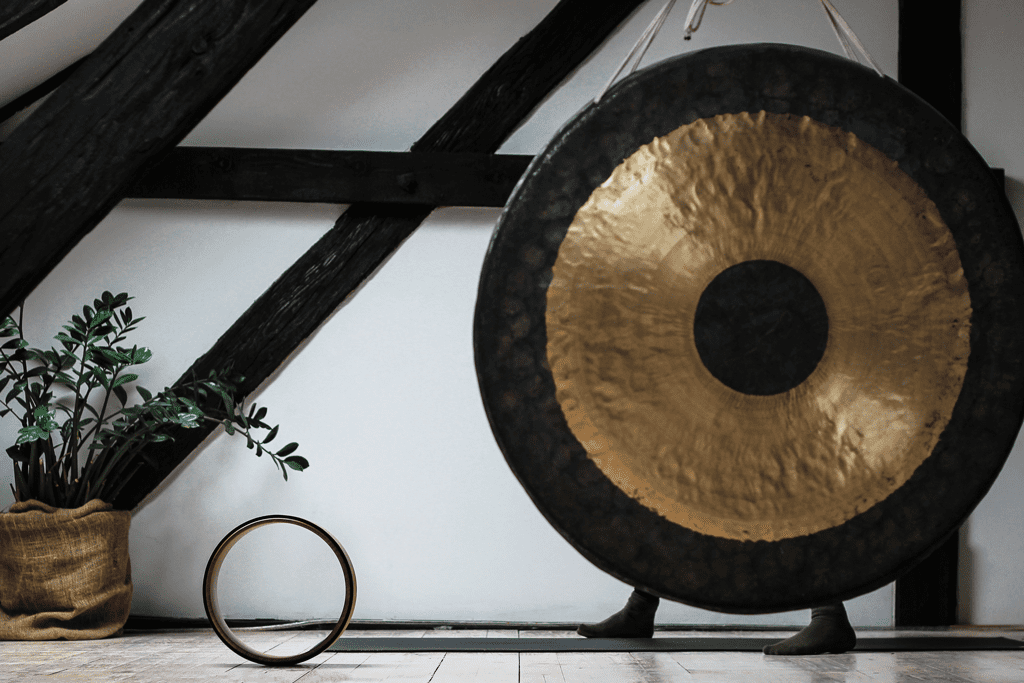Should I try sound baths?

Long associated with eastern religion (or old Rank movies), the rippling, echo-y tones of the gong are having a moment. Billed as a shortcut to a meditative state, practitioners claim the instrument’s acoustic vibrations can change brainwave frequencies, which are on a spectrum from high-frequency beta waves, which appear when we’re wired, to delta waves, which are evident when we’re asleep or meditating. In the middle, alpha waves show when we’re relaxed or reflective, and theta when we’re drowsy or in a state of flow. The idea is that sound therapists match the gong sounds to the frequencies of delta or theta waves to encourage stress reduction, promote emotional healing and improve sleep.
What is a sound bath?
Each practitioner has their own take, but essentially sessions take place in yoga studios (although any large space will work) and might start with yoga (often the Kundalini type, with lots of repetitive movements and chanting), or breathing exercises, before clients lie on mats under blankets. Eye masks are optional, though sessions tend to be in low light (candles are often used), and with incense. Once everyone’s horizontal, you’re asked to close your eyes and the sound gently starts, then builds up. As well as different-sized gongs, there may be tuning forks and Tibetan singing bowls (which emit a thrum when struck or the edge is rubbed), or the practitioner’s voice may create a series of sounds, with a final chime indicating the end of the session.
What are the benefits?
Gong bathers report a sense of relaxation, emotional release, a deep buzzy feeling and calmness after each session – often lasting several days. So, overall the feedback is a gong bath will help you chill and feel content and many report improved sleep: indeed, it’s not unusual for people to fall asleep during sessions. However, small numbers of people can find the apparent emotional release triggered by the bath distressing. There have also been reports of people experiencing vivid visions. In the US, sound therapy has been promoted as a treatment for Parkinson’s disease with sufferers reporting fewer tremors and decreased use of medication, thanks to an effect called entrainment, where music and sound help to harmonise muscle activity.
Any science behind it?
Not much at the moment. One recent US study found gentle sound, when synchronised to the rhythm of brain waves, could promote deep sleep and improve memory function, although nature sounds were used. And while research does show parts of the brain do oscillate at specific frequencies and there is evidence that this can be triggered by external factors such as the sound of a person’s voice, there’s nothing to prove that these oscillations have an effect on wellbeing. Research is happening, though, including one study looking at the effects of the buzzy, ‘brain-gasm’ feeling as a way to treat depression. Even so, lots of evidence shows meditative states can relieve stress and anxiety, high blood pressure and can help those with insomnia and chronic pain. So if it’s a shortcut to calm you’re looking for, this could be it. And you might get a nap, too.











